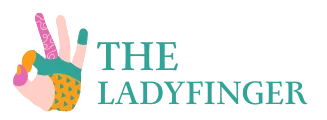In the evolving landscape of education, the integration of digital learning tools has become as essential as having pencils and paper in a classroom. Welcome to Freedom Hill, where innovation meets learning. Picture a place where students are not just sitting in front of screens, but actively engaging with their education in dynamic ways. From interactive lessons to gamified assessments, digital tools are transforming the educational experience into something that’s not only effective, but also enjoyable. Stick around as we unravel how Freedom Hill is harnessing these technologies to revolutionize learning.
Table of Contents
ToggleUnderstanding Digital Learning Tools

Digital learning tools are platforms or software used in education that help learning through technology. These tools encompass a broad range of applications, from Learning Management Systems (LMS) such as Google Classroom or Canvas to interactive software like Kahoot. or Quizlet. They are designed to enhance the learning experience, making it more personalized, accessible, and engaging. Besides, these tools often feature analytics that allow educators to track students’ progress in real-time, providing a feedback loop that’s crucial for both teachers and learners.
Imagine a classroom where traditional teaching methods blend seamlessly with engaging digital content. This shift toward digitization not only accommodates different learning styles, but also prepares students for the technological demands of the 21st century.
Importance of Digital Learning Tools in Education
The importance of digital learning tools in education cannot be overstated. They provide key advantages that traditional methods often lack. For instance, personalized learning experiences allow students to work at their own pace, dive deep into subjects that intrigue them, and even revisit challenging concepts as many times as needed. This accessibility is invaluable in meeting diverse learning needs.
Also, these tools promote active participation and engagement. Students can collaborate on projects, participate in discussions, and even compete in friendly quizzes, making learning a community-based try. Evidence shows that when students are engaged, retention improves, and the results often speak for themselves. Schools adopting these digital tools are witnessing improved test scores, decreased dropout rates, and enhanced student satisfaction.
In short, integrating digital tools into education is not just a trend: it’s a powerful way to improve learning outcomes, equipping students with vital skills for their futures.
Overview of Freedom Hill’s Educational Approach
Freedom Hill is a trailblazer in educational methods, striving not just for academic excellence but also fostering a holistic environment that promotes creativity and critical thinking. Here, the approach to education is deeply rooted in the belief that every student deserves an engaging and rich learning experience. This means blending innovative teaching strategies with the latest technology.
At Freedom Hill, educators are continuously trained to incorporate digital learning tools effectively within their curricula. The aim is to create an inclusive atmosphere where students can explore, experiment, and express themselves freely. Technology serves as a facilitator of this mission, providing various resources that complement traditional teaching methods.
The educational philosophy at Freedom Hill underscores collaboration, adaptability, and a student-centered focus, allowing every learner to shine.
Key Digital Learning Tools Used at Freedom Hill
Freedom Hill leverages a variety of digital learning tools that align with its educational philosophy. Here’s a closer look at some of the key platforms being employed:
Impact of Digital Learning Tools on Student Engagement
One of the standout tools is the Learning Management System (LMS), which serves as a central hub for assignments, resources, and communication between students and teachers. Through this platform, students can collaborate on projects, access additional learning materials, and communicate with peers or instructors, fostering a sense of community even in a digital space.
Interactive platforms like Kahoot. make learning fun. By converting quizzes and assessments into an engaging competitive experience, students become more invested in their learning process. Gamification not only makes content memorable but also encourages healthy competition among peers, leading to heightened engagement.
Case Studies: Success Stories from Freedom Hill
These tools have led to remarkable successes. For instance, in a recent science project, students utilized collaborative presentations to showcase their findings. Feedback from peers and teachers emphasized not only the quality of content but also the innovative use of digital tools to enhance understanding. Such hands-on experiences have become the norm, demonstrating the tangible benefits of embracing technology in education.
Challenges and Considerations
While the benefits of digital learning tools are evident, certain challenges persist. Not every student may have equal access to devices or reliable internet connections, creating a potential divide in learning opportunities. Also, educators need to be well-trained in using these tools: otherwise, their effectiveness diminishes. It’s vital that both students and teachers receive proper support as they navigate this digital landscape.
Also, there can be resistance to change from traditional teaching methods. Some educators may feel overwhelmed by the rapid pace of technological advancements. Hence, ongoing professional development and supportive leadership are crucial to fostering a progressive environment where everyone feels empowered to adapt.
The Future of Digital Learning at Freedom Hill
Looking ahead, Freedom Hill is poised to continue enhancing its digital learning initiatives. Plans for expanding the array of available tools are in the works, ensuring that students stay ahead of educational trends. With advancements in artificial intelligence and augmented reality, the possibilities for immersive learning experiences are boundless.
Also, as data analytics become more advanced, educators will be able to tailor instruction even more specifically to individual student needs. Imagine an educational landscape where learning is not only personalized but also predictive, helping educators anticipate challenges before they arise. This future is not just probable: it’s already taking shape, and Freedom Hill is at the forefront.




